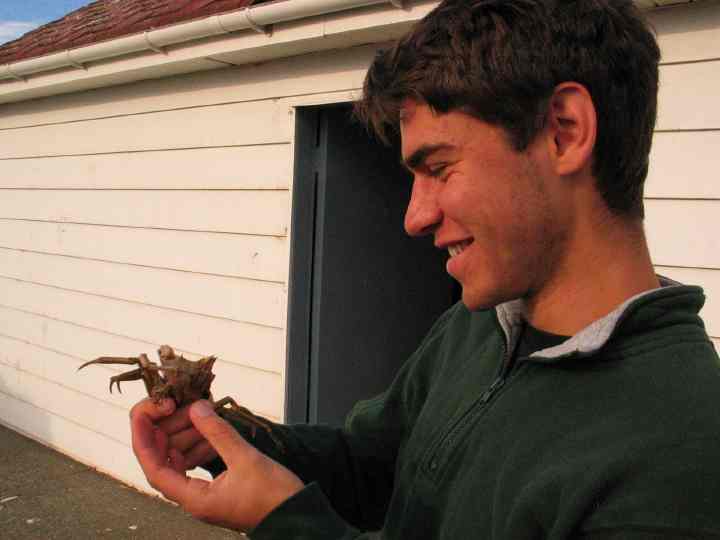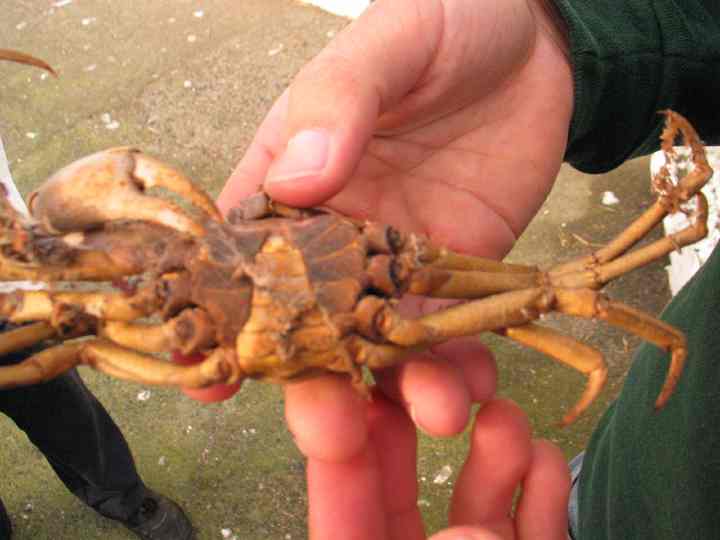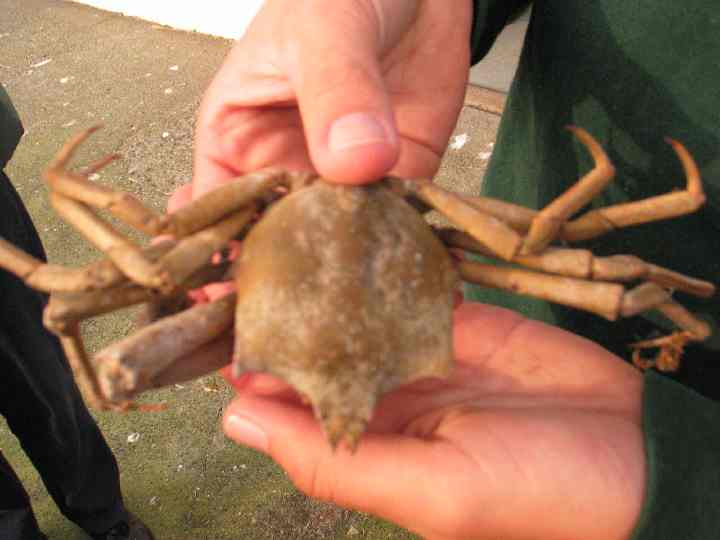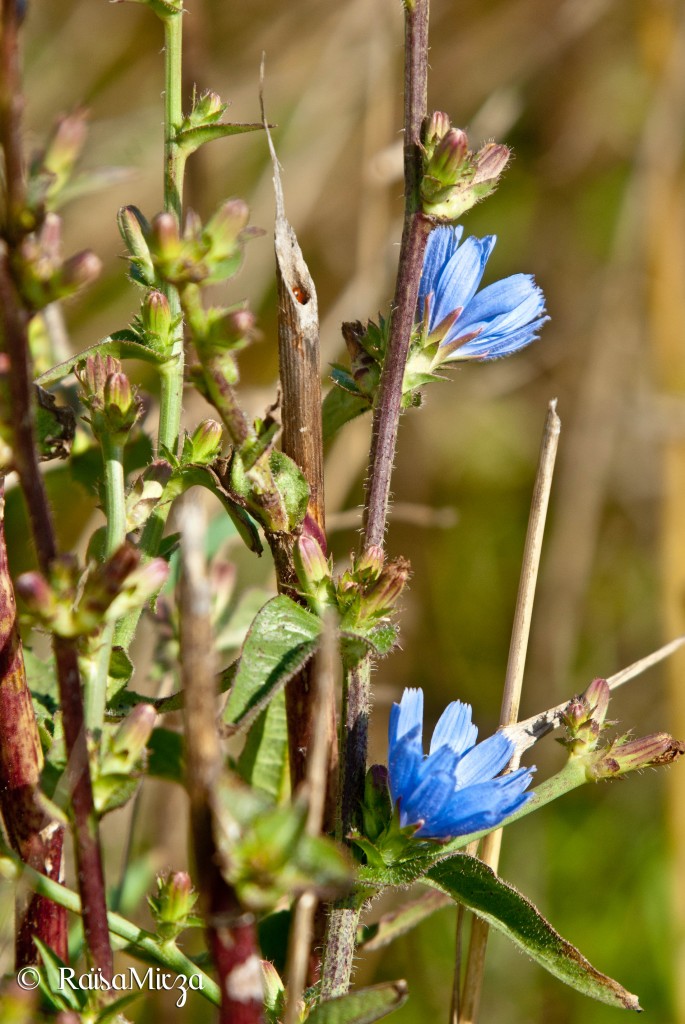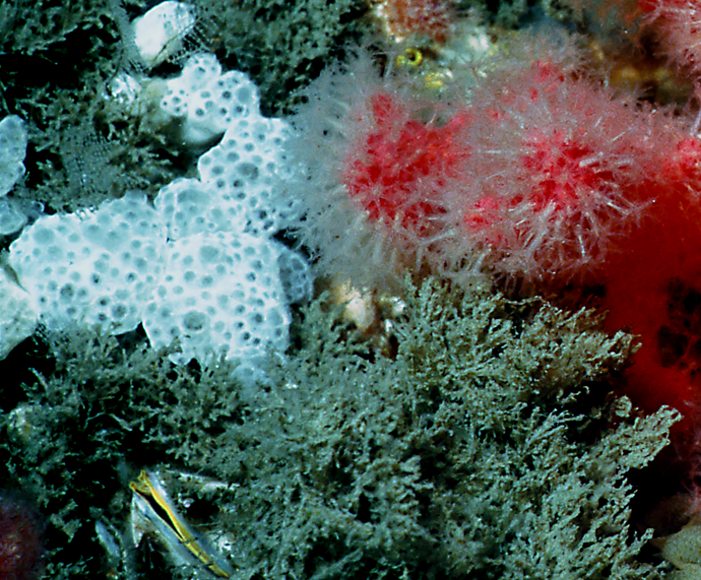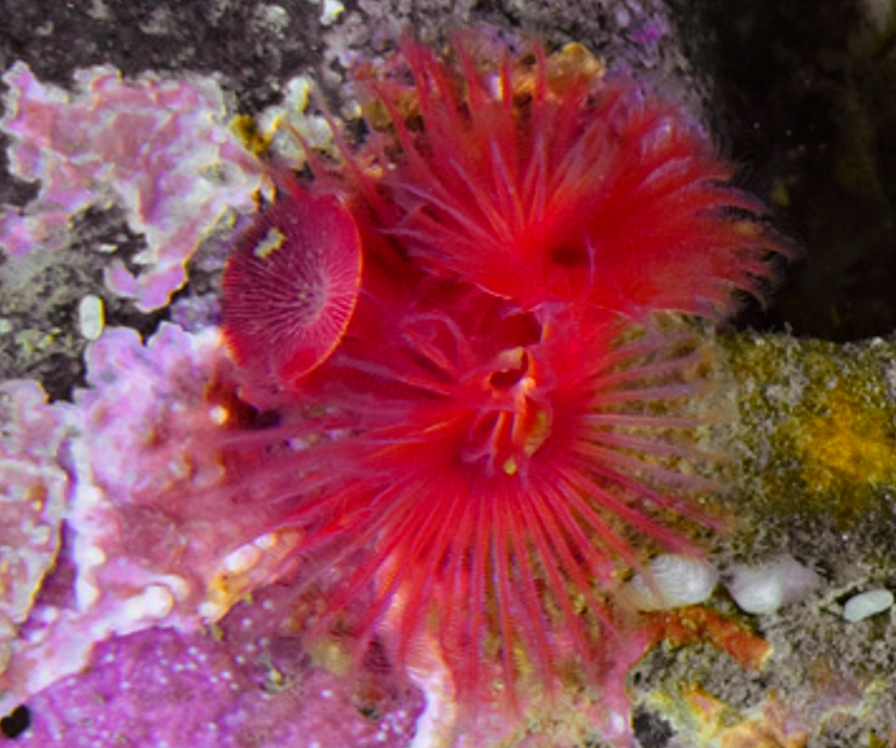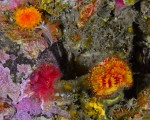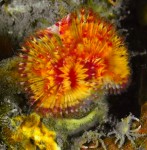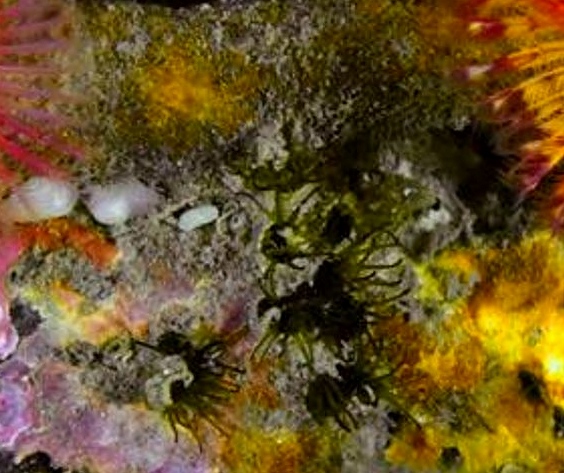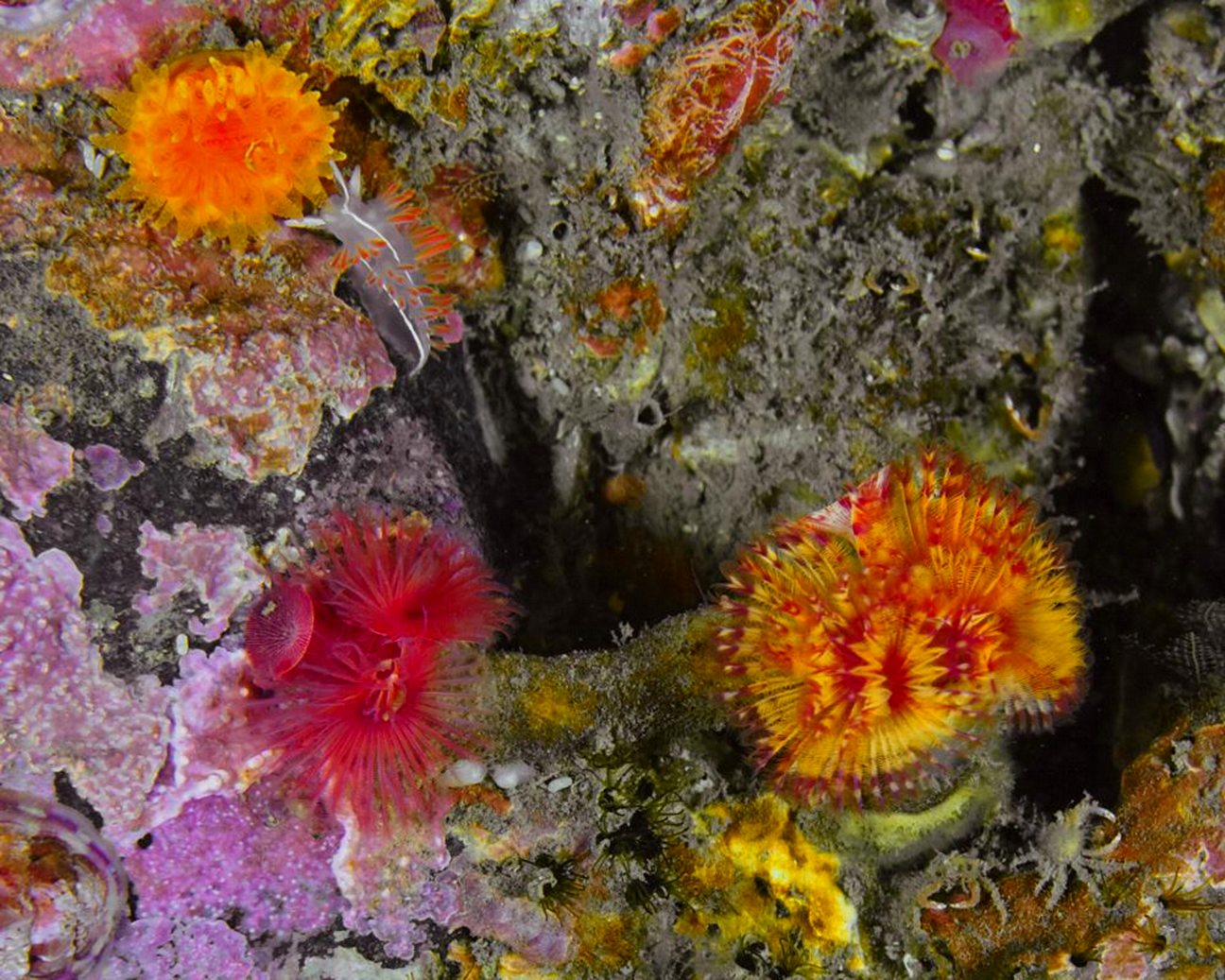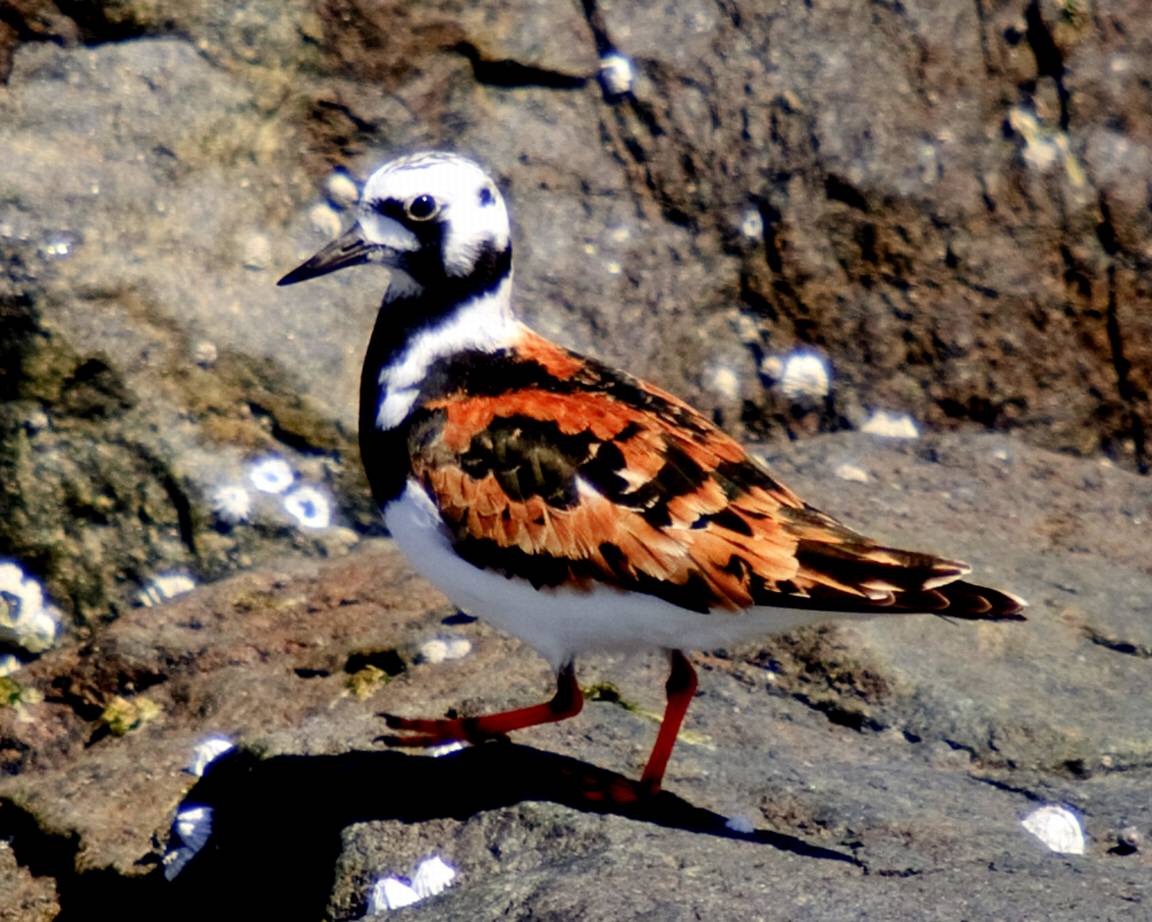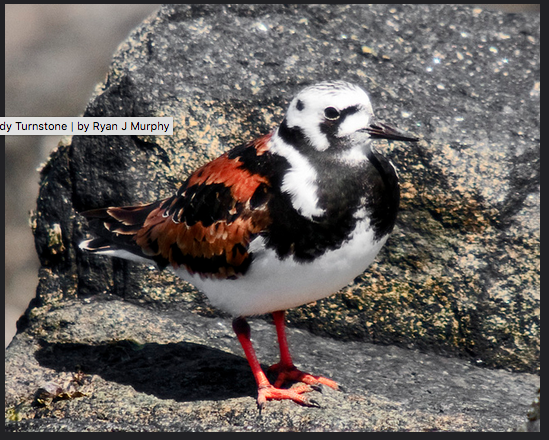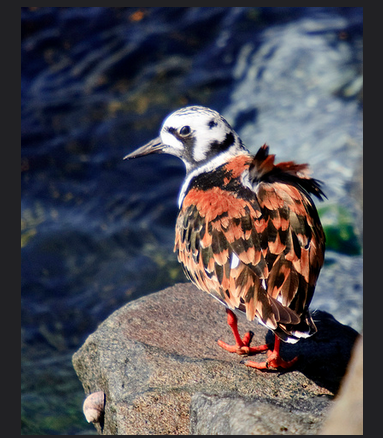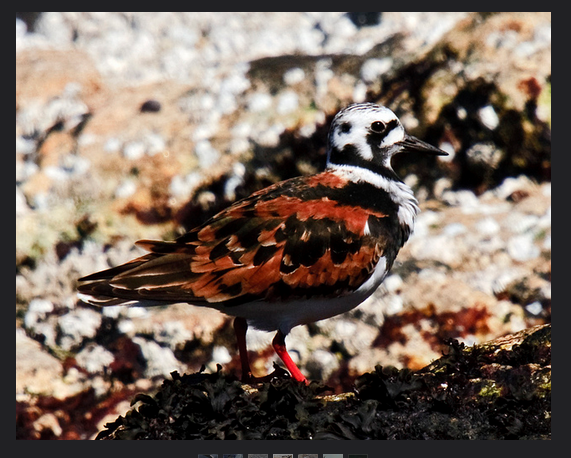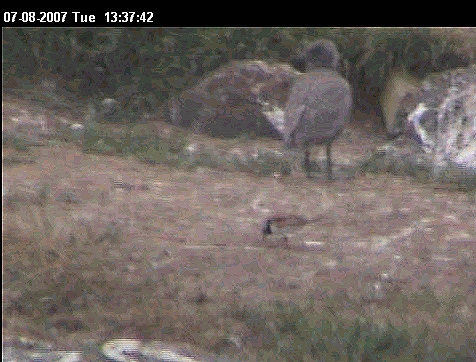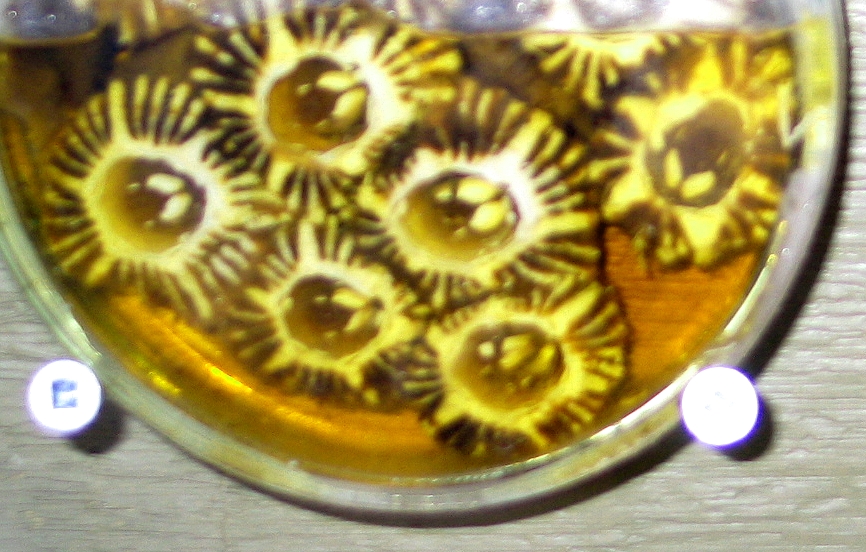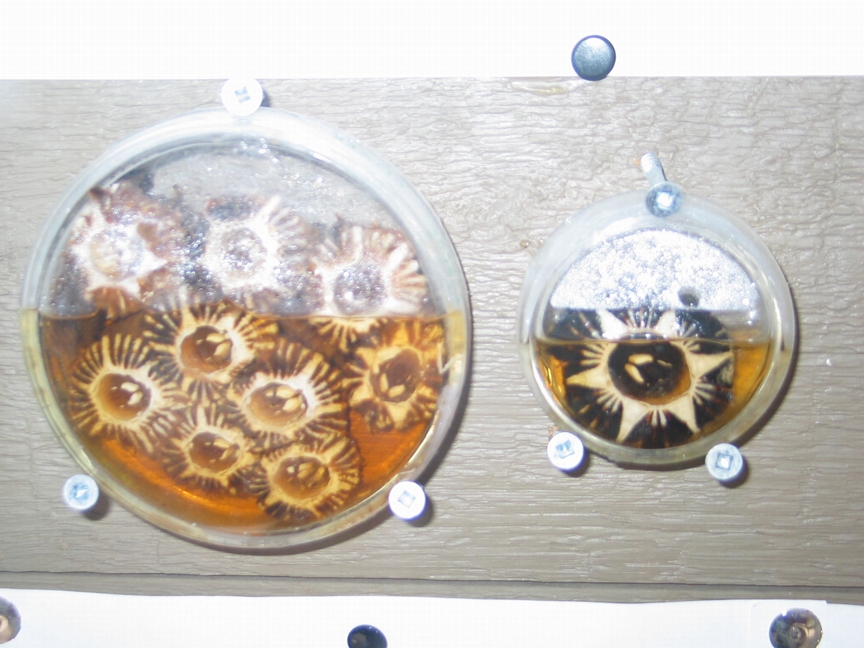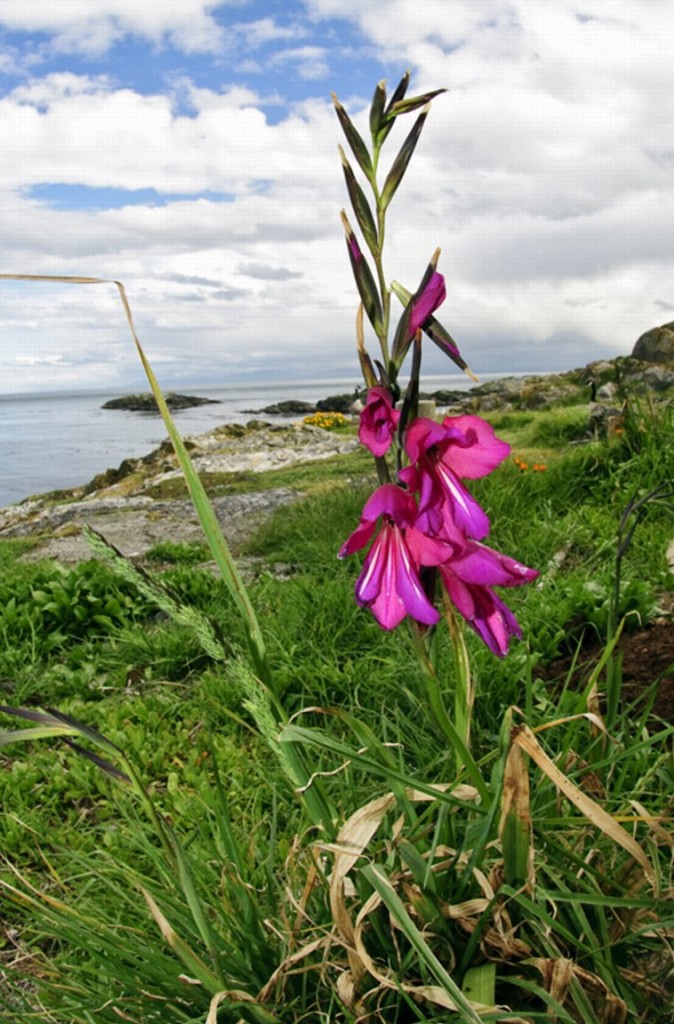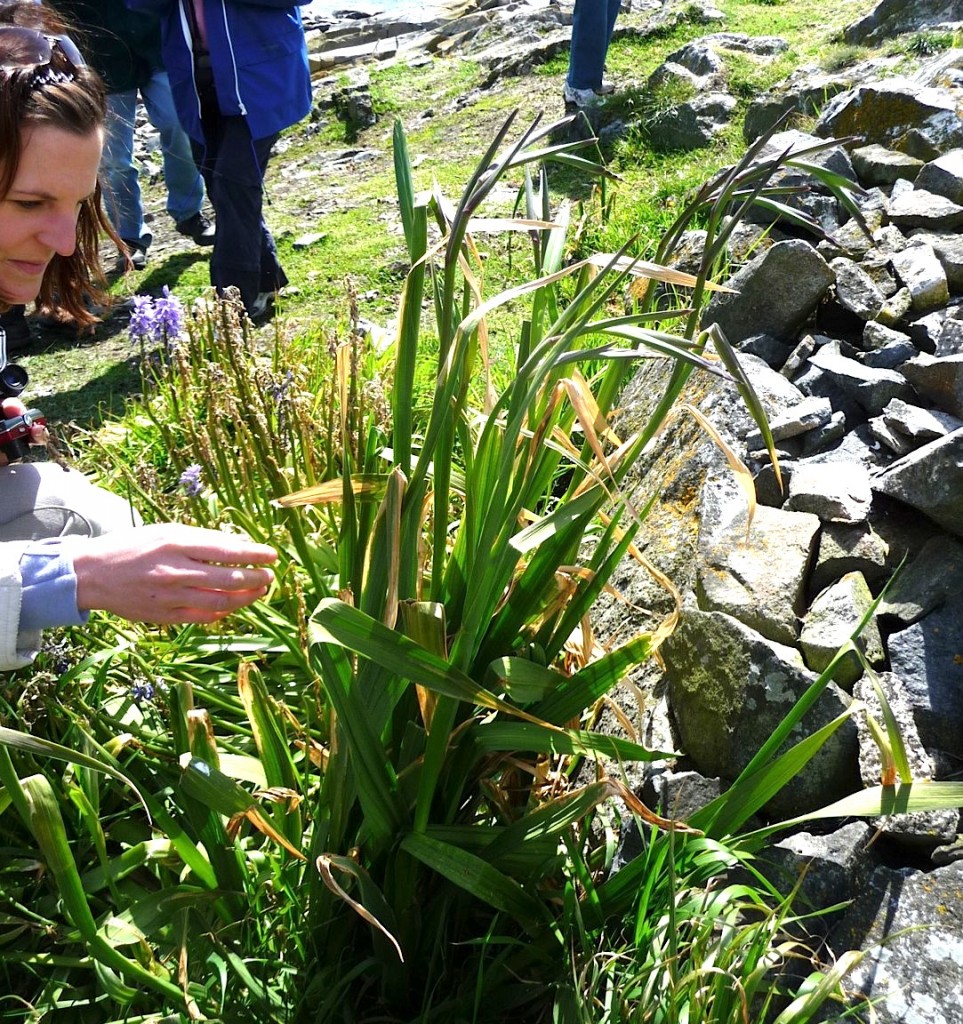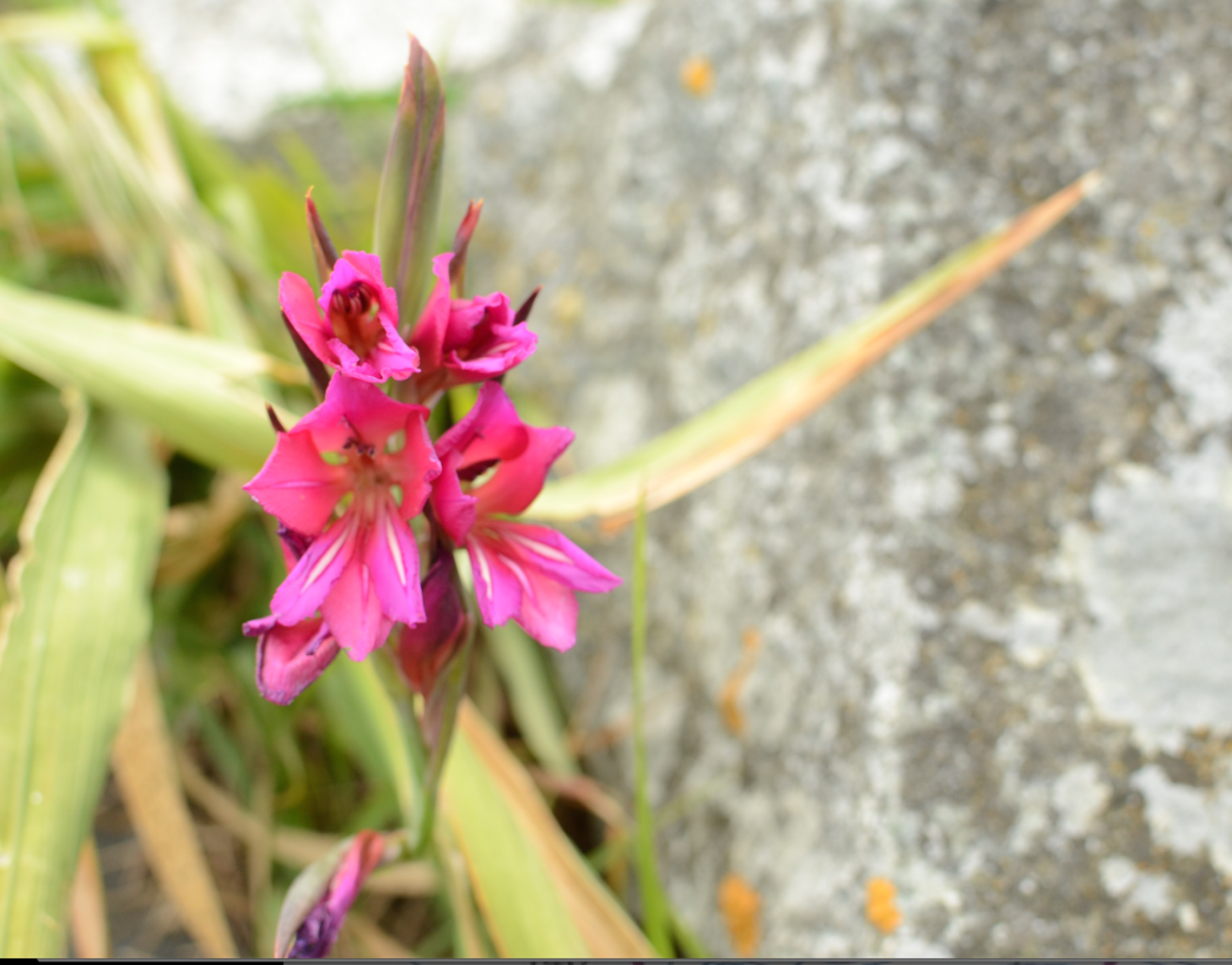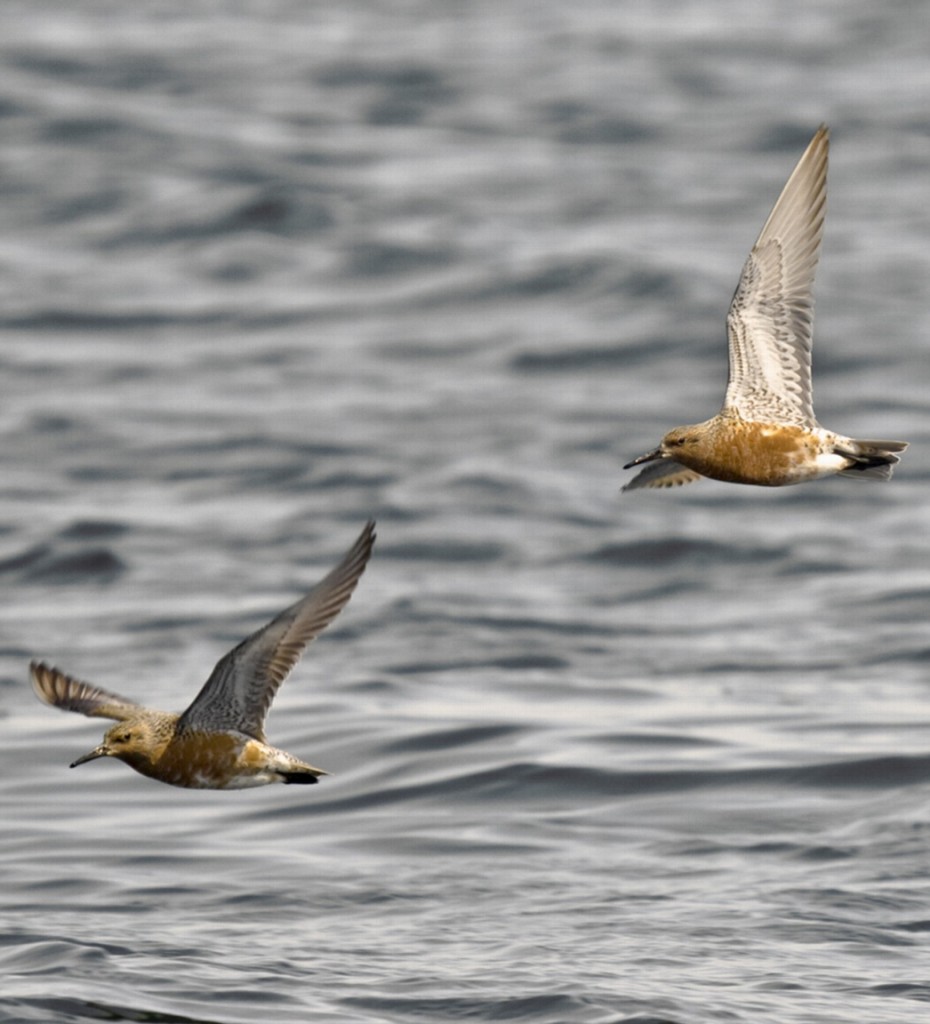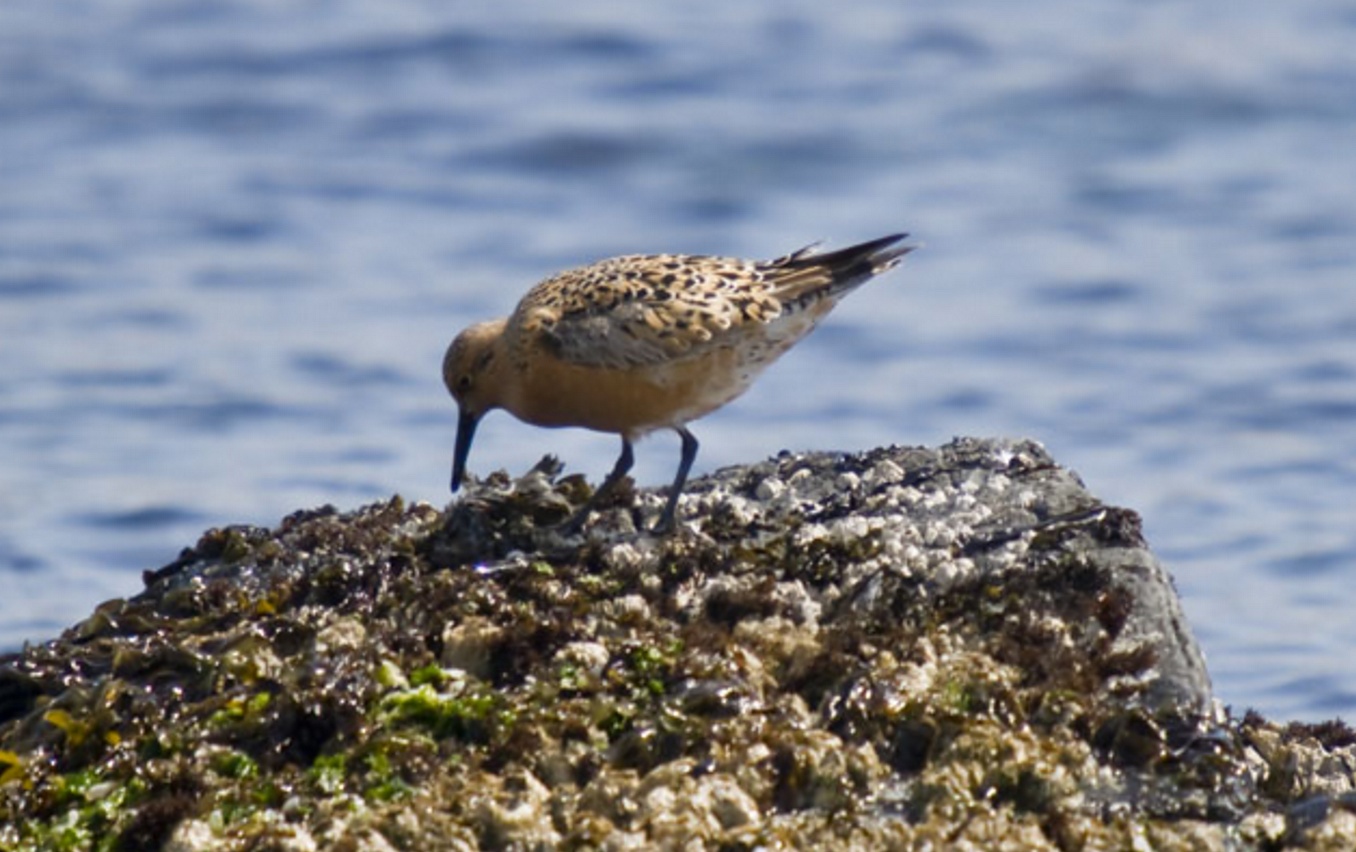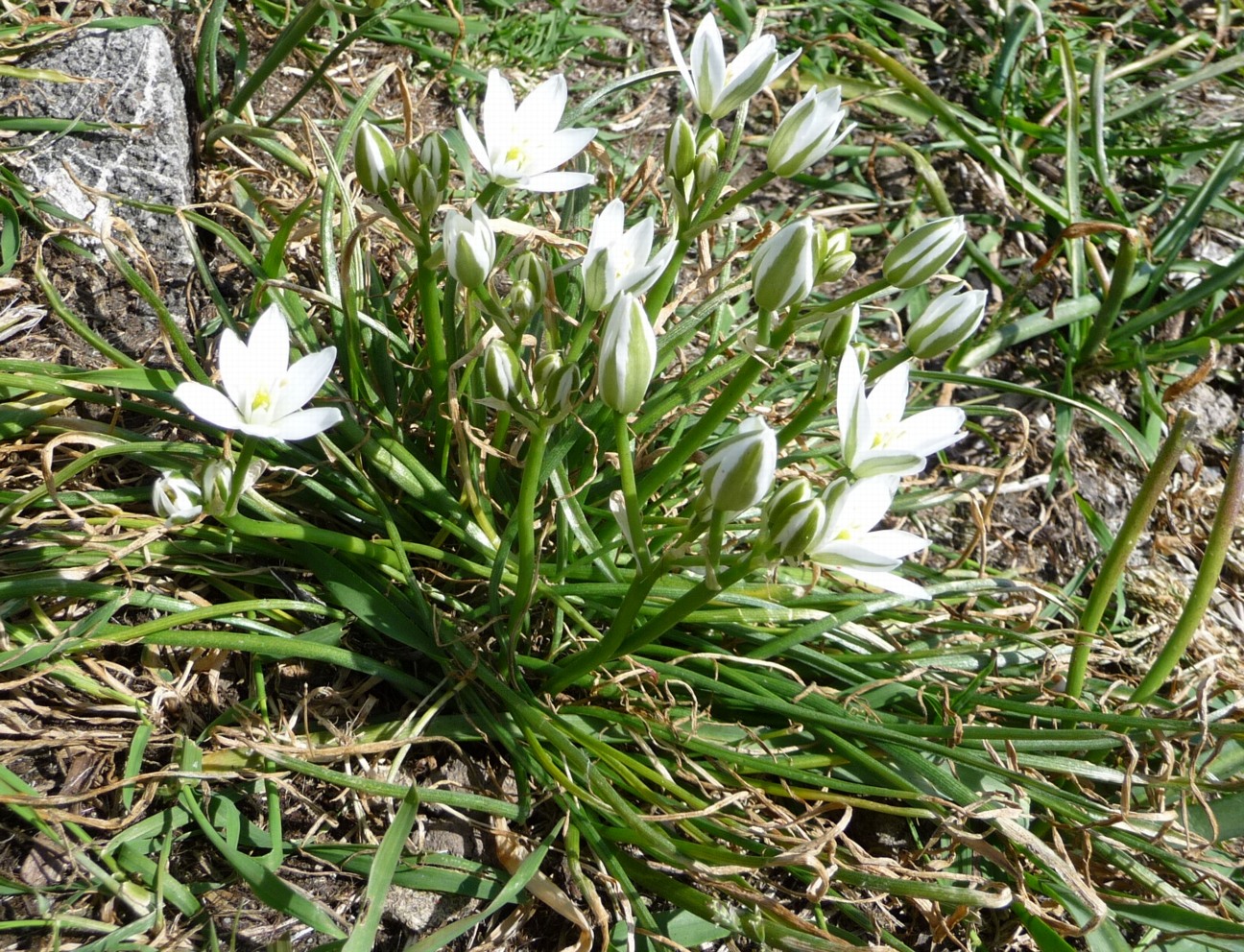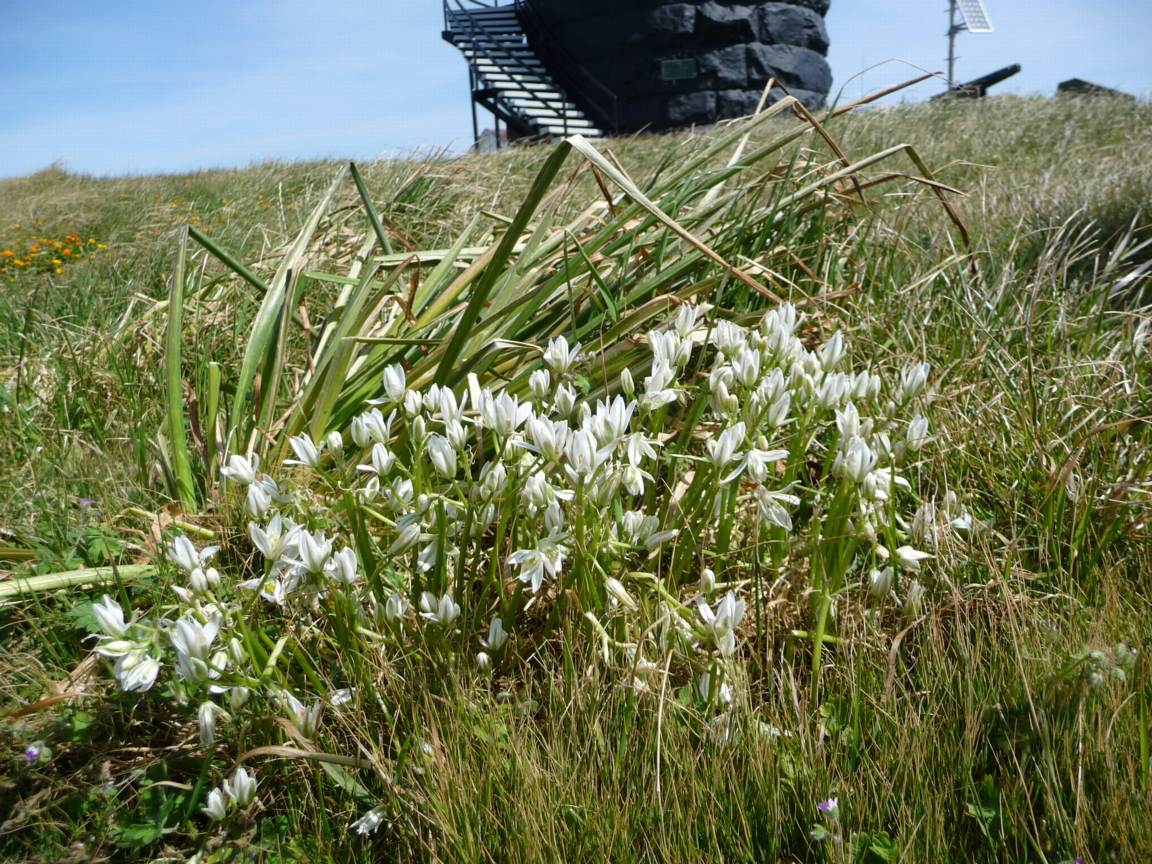- Hunter holding the Kelp Crab.
- The ventral side. Here you can see the narrow tail segments indicating this is a male
- The Dorsal side
This is a very common crab subtidally at Race Rocks, frequently seen dangling from kelp as it reaches wide with its pincers for catching prey
Domain Eukarya
Kingdom Animalia
Phylum Arthropoda
Class Malacostraca
Order Decapoda
Family Epialtidaae
Genus Pugettia
Species producta
Common Name:Kellp Crab
| Other Members of the Phylum Arthropoda at Race Rocks |
and Image File |
 The Race Rocks taxonomy is a collaborative venture originally started with the Biology and Environmental Systems students of Lester Pearson College UWC. It now also has contributions added by Faculty, Staff, Volunteers and Observers on the remote control webcams. The Race Rocks taxonomy is a collaborative venture originally started with the Biology and Environmental Systems students of Lester Pearson College UWC. It now also has contributions added by Faculty, Staff, Volunteers and Observers on the remote control webcams.
Garry Fletcher |

